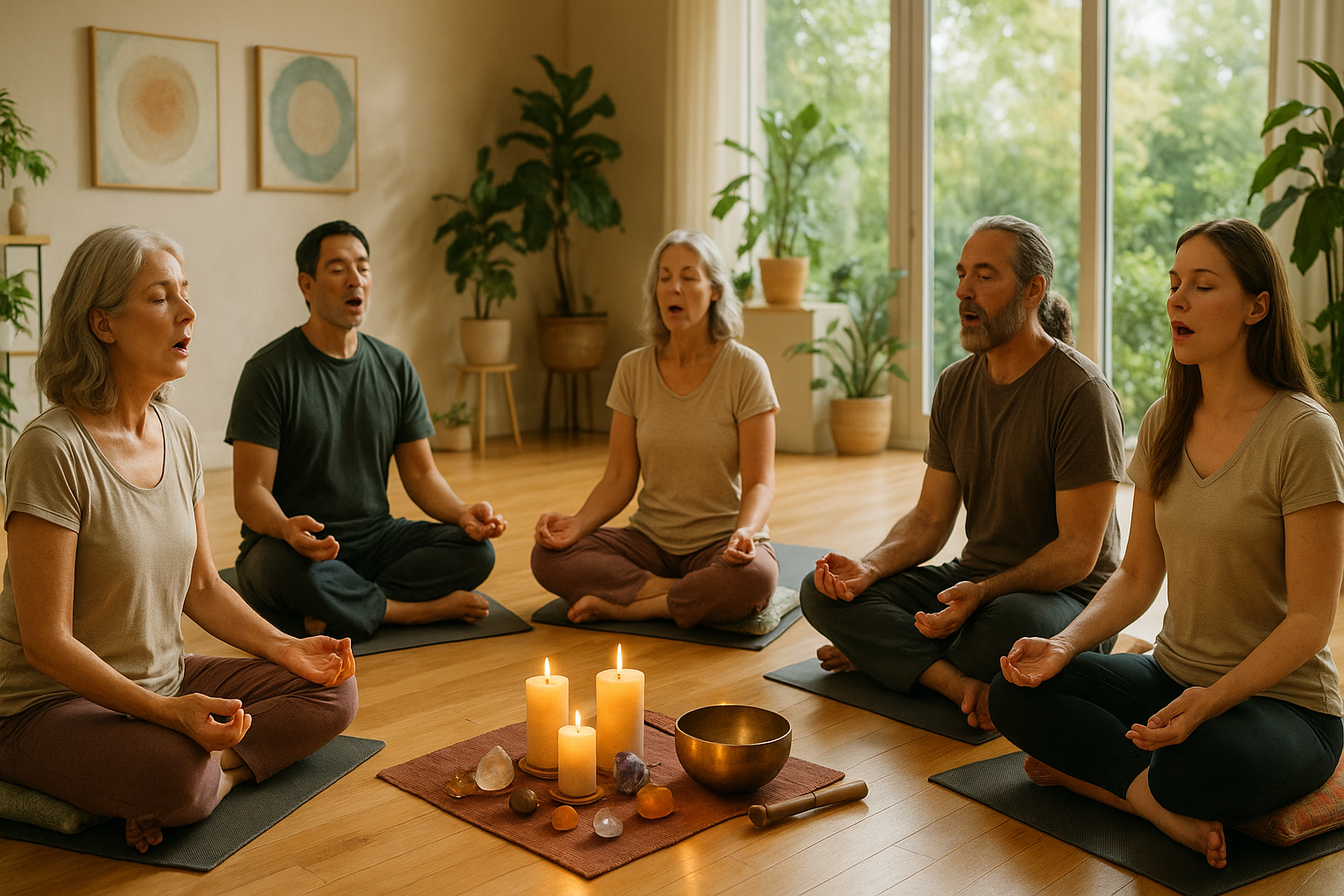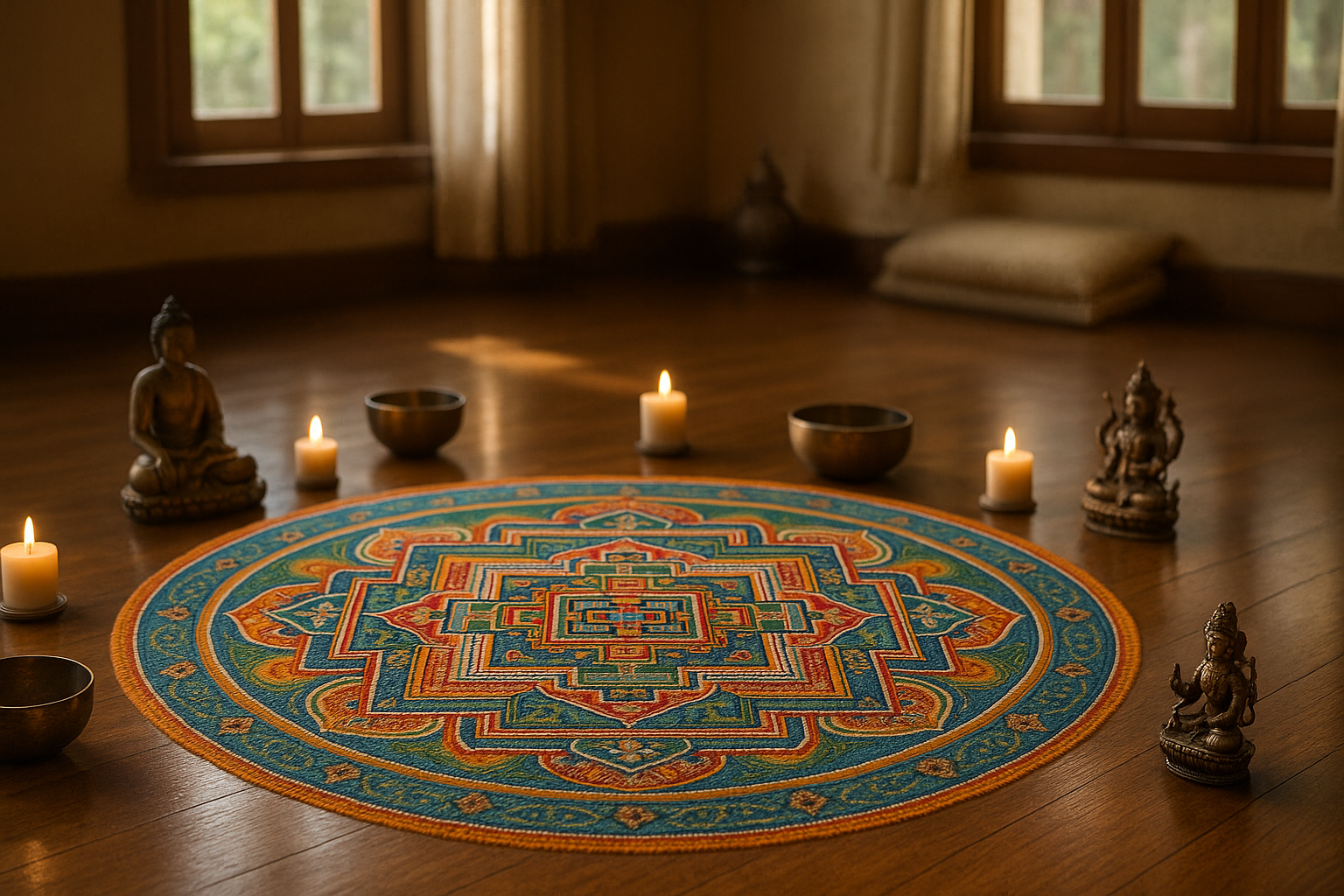In a world that often feels dominated by the visual and the audible, where screens flash images at us and voices echo through our devices, there’s a subtle yet profound sense that often goes unnoticed: our sense of smell. Imagine, for a moment, stepping into a room where the air is infused with the gentle aroma of lavender. Instantly, a wave of calm washes over you. Or think back to a time when the rich scent of freshly baked bread transported you to cherished childhood memories. These experiences illustrate the immense, yet frequently underestimated, power of our olfactory senses to influence emotions and moods. This is the magic of smell-mapping, and it’s time we explore its potential to achieve emotional balance through aromatherapy.
At its core, smell-mapping involves creating a strategic map of aromas that can be used to evoke specific emotional responses. This practice draws from the ancient art of aromatherapy, which has been revered for centuries across various cultures. From the incense-filled temples of ancient Egypt to the bustling spice markets of India, scents have long been used to heal, comfort, and invigorate. Modern science is catching up with these age-old traditions, providing evidence for what many have instinctively known: certain scents have the ability to influence our psychological state in remarkable ways. But how does this process work, and how can it be harnessed in our everyday lives to promote emotional well-being?
To truly appreciate the power of smell-mapping, it’s essential to understand the intimate connection between our sense of smell and the brain. Unlike our other senses, which are routed through the thalamus, the olfactory system has a direct line to the limbic system—the part of the brain that governs emotions and memory. This unique pathway explains why a whiff of a particular scent can instantly trigger a vivid recollection or an intense emotional reaction. By deliberately selecting and mapping scents, we can tap into this neural shortcut to evoke desired emotional states, whether it be calmness, focus, or even joy.
In the upcoming sections, we will delve into the art and science of smell-mapping, uncovering how specific scents can be strategically used to foster emotional balance. We’ll explore popular essential oils like lavender, peppermint, and eucalyptus, examining their unique properties and effects on mood. Additionally, we’ll discuss practical applications of smell-mapping in various settings, from personal spaces to workplaces, and even in therapeutic environments. You’ll learn how to create your own personalized aroma map tailored to your emotional needs, empowering you to navigate the complexities of daily life with greater ease and tranquility.
So, whether you’re seeking solace from a hectic day, aiming to boost your productivity, or simply curious about the untapped potential of your senses, this exploration into the world of smell-mapping offers a fascinating and practical journey. By the end of this article, you’ll not only have a deeper understanding of the profound connection between scent and emotion but also a toolkit of aromatic allies to help you achieve emotional equilibrium. 🌿✨ Embark with us on this olfactory adventure and discover the transformative power of smell.
The Science Behind Aromatherapy and Smell-Mapping
Aromatherapy is an ancient practice that harnesses the power of essential oils extracted from plants, flowers, and herbs to promote physical and emotional well-being. This holistic healing method has been used for centuries, with its roots tracing back to ancient civilizations such as Egypt, China, and India. The science behind aromatherapy lies in the powerful effect that scents have on the brain and body. When we inhale essential oils, the aroma molecules travel through the olfactory nerves directly to the brain, where they influence the limbic system, an area responsible for emotions, memory, and behavior.
Smell-mapping is a relatively new concept that takes aromatherapy a step further by categorizing scents based on their emotional and psychological effects. By understanding how specific scents affect our mood and mental state, we can use smell-mapping to achieve emotional balance and enhance our well-being. For instance, lavender is well-known for its calming and relaxing properties, while citrus scents like lemon and orange are invigorating and energizing. Smell-mapping helps individuals select the right essential oils for their specific needs, whether they seek to reduce stress, improve sleep, or boost mood.
Recent studies have delved deeper into the mechanisms of smell and its impact on the brain. The olfactory system is directly connected to the brain’s amygdala and hippocampus, which explains why certain smells can evoke strong emotional memories. Moreover, research has shown that essential oils can influence brain wave activity, altering the state of consciousness and promoting relaxation or alertness. This fascinating interplay between scent and brain function underscores the potential of smell-mapping in achieving emotional equilibrium.
The Role of Essential Oils in Emotional Regulation
Essential oils are concentrated plant extracts that capture the plant’s scent and flavor, or “essence.” Each essential oil has a unique chemical composition that determines its aroma, potential therapeutic benefits, and effects on the body and mind. The role of essential oils in emotional regulation is significant, as they can interact with the brain’s chemistry to promote feelings of calmness, happiness, or vitality.
For instance, chamomile essential oil is renowned for its soothing properties, making it an excellent choice for reducing anxiety and promoting relaxation. Similarly, the uplifting aroma of peppermint oil is often used to alleviate fatigue and enhance focus. By incorporating smell-mapping techniques, individuals can create personalized aromatherapy blends tailored to their emotional needs. This targeted approach not only enhances the efficacy of aromatherapy but also empowers individuals to take control of their emotional health.
Moreover, essential oils can be used in various ways to regulate emotions. They can be diffused in the air, applied topically, or used in baths and massages. Each method offers unique benefits and can be chosen based on personal preferences and desired outcomes. The versatility of essential oils makes them a valuable tool in emotional regulation and overall wellness.
Implementing Smell-Mapping in Daily Life
Integrating smell-mapping into your daily routine can be a transformative experience, allowing you to harness the power of aromatherapy to support your emotional well-being. The key to successful implementation lies in understanding the specific effects of different scents and how they align with your personal needs and goals.
Start by identifying the emotions you wish to address and the outcomes you hope to achieve. Whether you want to reduce stress, enhance concentration, or uplift your mood, there are essential oils that can assist you in your journey. For stress reduction, consider using oils like lavender, bergamot, and frankincense. For focus and clarity, peppermint, rosemary, and lemon can be beneficial. If your goal is to boost your mood, consider using oils such as sweet orange, ylang-ylang, and geranium.
Once you have identified the oils that resonate with your emotional needs, explore different ways to incorporate them into your routine. Diffusing oils in your home or workspace is a simple yet effective way to enjoy their benefits. You can also create a personal inhaler to carry with you, ensuring you have access to the scents that support your emotional balance throughout the day. Additionally, consider creating a bedtime ritual with calming oils to promote restful sleep and emotional rejuvenation.
Enhancing Mindfulness with Aromatherapy
Aromatherapy and smell-mapping can also be powerful tools for enhancing mindfulness and presence in daily life. By engaging your sense of smell, you can cultivate a deeper awareness of your surroundings and internal state. This practice encourages you to be present in the moment, reducing stress and promoting emotional balance.
One way to incorporate mindfulness into your aromatherapy practice is through meditation. Begin your meditation session by diffusing a calming essential oil, such as sandalwood or frankincense, and take a few deep breaths, focusing on the aroma. Allow the scent to ground you in the present moment, and use it as an anchor for your meditation practice. As you inhale the aroma, visualize the scent enveloping you in a cocoon of tranquility and peace.
Another approach is to use aromatherapy as a tool for setting intentions. Choose an essential oil that aligns with your desired emotional state or goal, and use it as a reminder of your intention throughout the day. Whether you seek to cultivate gratitude, patience, or creativity, the power of scent can serve as a constant reminder of your commitment to personal growth and emotional balance.
Comparative Analysis: Popular Essential Oils and Their Effects
When it comes to choosing the right essential oils for your emotional needs, it can be helpful to compare their properties and effects. Below is a table that outlines some popular essential oils, their primary benefits, and recommended uses.
| Essential Oil | Primary Benefits | Recommended Uses |
|---|---|---|
| Lavender | Calming, relaxing, stress reduction | Diffusion, baths, sleep rituals |
| Peppermint | Invigorating, enhances focus, alleviates fatigue | Diffusion, personal inhalers, massages |
| Bergamot | Uplifting, improves mood, stress relief | Diffusion, topical application, baths |
| Chamomile | Soothing, reduces anxiety, promotes relaxation | Diffusion, massages, sleep rituals |
| Lemon | Energizing, boosts mood, enhances clarity | Diffusion, personal inhalers, cleaning |
By referring to the table above, you can make informed decisions about which essential oils best suit your emotional needs and lifestyle. Remember that the effectiveness of aromatherapy can vary from person to person, so it’s essential to experiment and find the combinations that work best for you.
Resources and Tools for Smell-Mapping
To further explore the potential of smell-mapping and aromatherapy, consider leveraging various resources and tools available online and offline. There are numerous books, courses, and workshops dedicated to the study and practice of aromatherapy, offering valuable insights into the art and science of essential oils.
Online platforms like YouTube provide a wealth of information and tutorials on how to effectively use essential oils for emotional balance. For instance, you can watch this informative video on [Aromatherapy for Stress Relief and Relaxation](https://www.youtube.com/watch?v=video_id) by the Aromahead Institute, which offers practical tips and guidance on incorporating aromatherapy into your daily routine.
Additionally, consider investing in an essential oil diffuser, personal inhalers, and other aromatherapy accessories to enhance your practice. These tools can help you create a calming and supportive environment, allowing you to fully immerse yourself in the benefits of aromatherapy and smell-mapping.
Final Thoughts on Smell-Mapping and Emotional Balance
In conclusion, the exploration of smell-mapping and its profound impact on emotional balance through aromatherapy unveils a fascinating intersection between the science of olfaction and holistic well-being. Throughout this article, we’ve journeyed through the intricate ways in which our sense of smell is intrinsically linked to our emotional and psychological states. By understanding and harnessing the power of smell-mapping, individuals can achieve a more harmonious emotional balance, fostering both mental and physical health.
At the heart of this exploration is the realization that our sense of smell is not just a sensory experience but a gateway to emotional and psychological well-being. Smell-mapping allows us to identify specific scents that resonate with our personal experiences, memories, and emotions, enabling a tailored approach to aromatherapy. This personalized strategy ensures that the therapeutic use of essential oils is more effective, tapping into our unique emotional landscapes and promoting healing from within.
One of the key points highlighted is the scientific foundation of aromatherapy, rooted in how our olfactory system is directly connected to the limbic system, the brain’s emotional center. This connection explains why certain scents can evoke powerful emotional responses and memories, offering a profound tool for managing stress, anxiety, and depression. The studies and examples provided illustrate how targeted aromatherapy can enhance mood, improve mental clarity, and even boost confidence.
Furthermore, the discussion underscored the versatility and accessibility of aromatherapy as a complementary therapy. Whether through diffusers, topical applications, or inhalation, the integration of essential oils into daily routines offers a non-invasive and natural way to support emotional health. The growing body of research and positive testimonials around aromatherapy reinforce its potential as a valuable addition to both conventional and alternative healthcare practices.
As we consider the broader implications of smell-mapping, it becomes evident that this approach extends beyond individual well-being. It offers opportunities for enhancing environments, from workplaces aiming to improve productivity and employee satisfaction to healthcare settings seeking to create calming atmospheres for patients. The potential applications of smell-mapping are vast, promising benefits not only on a personal level but also within communal and professional spaces.
To further explore this fascinating subject, I encourage you to delve into additional research and resources. Engaging with reputable sources can deepen your understanding and provide insights into how smell-mapping and aromatherapy can be customized to suit your needs. Websites like the National Association for Holistic Aromatherapy (https://naha.org/) and the International Federation of Aromatherapists (https://ifaroma.org/) offer extensive information and guidelines for those interested in incorporating aromatherapy into their lives.
In reinforcing the importance of smell-mapping and aromatherapy, it is essential to emphasize the holistic approach to health that these practices advocate. Embracing the power of scent not only enriches our sensory experiences but also nurtures our emotional resilience and psychological fortitude. By acknowledging and harnessing the profound connection between scent and emotion, we can cultivate a more balanced and fulfilling life.
As you reflect on the insights shared in this article, consider how you might incorporate smell-mapping into your own journey towards emotional balance. Whether you’re a newcomer to aromatherapy or a seasoned enthusiast, there are always new scents to explore and new ways to integrate them into your daily life. Share your experiences with others, exchange ideas, and contribute to the growing community of individuals who recognize the transformative power of scent.
In closing, I invite you to comment on this article, share it with friends and family, and apply what you’ve learned to enhance your well-being. By doing so, you become part of a movement that values the subtle yet powerful influence of aroma on our lives. Together, we can embrace the art and science of smell-mapping, creating a world where emotional balance is within everyone’s reach. 🌿✨

Toni Santos is a visual storyteller and sensory artisan whose work explores the ancient aesthetics of the senses—how early cultures designed their environments not just for function, but for emotional, spiritual, and sensory harmony. Through thoughtful visual interpretations, Toni revives a world where every texture, scent, color, and sound was part of a deeper design for inner balance.
Guided by a passion for the subtle intelligence of ancient spaces—from meditative gardens to sacred interiors—Toni’s creations reflect the intentional artistry once used to align body, spirit, and surroundings. Whether studying the calming patterns of Mesopotamian textiles or the acoustic geometry of forgotten sanctuaries, his work invites modern audiences to rediscover the sensory wisdom of the past.
With roots in handcrafted design and symbolic research, Toni brings together material culture, ritual aesthetics, and environmental intuition. His art does more than depict—it restores a dialogue between the senses and the soul, rooted in time-tested principles of well-being.
As the guiding force behind Vizovex, Toni shares curated visuals, reflective essays, and timeless design stories that invite others to reconnect with the aesthetic languages of ancient harmony.
His work is a tribute to:
The sensory intelligence of ancestral environments
The use of beauty as a tool for spiritual and emotional balance
The ancient belief in harmony between people, nature, and space
Whether you’re a designer, a historian, or a seeker of inner stillness, Toni welcomes you into a world where the senses are sacred, and where ancient beauty whispers through space, rhythm, and form—one texture, one echo, one breath at a time.





